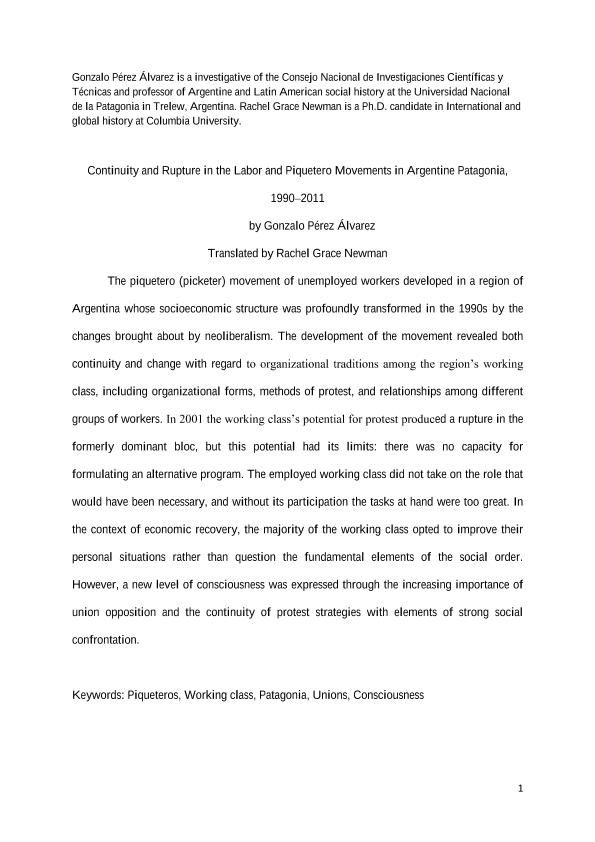Artículo
Continuity and Rupture in the Labor and Piquetero Movements in Argentine Patagonia, 1990-2011
Fecha de publicación:
03/2015
Editorial:
Sage Publications
Revista:
Latin American Perspectives
ISSN:
0094-582X
Idioma:
Inglés
Tipo de recurso:
Artículo publicado
Clasificación temática:
Resumen
The piquetero (picketer) movement of unemployed workers developed in a region of Argentina whose socioeconomic structure was profoundly transformed in the 1990s by the changes brought about by neoliberalism. The development of the movement revealed both continuity and change with regard to organizational traditions among the region?s working class, including organizational forms, methods of protest, and relationships among different groups of workers. In 2001 the working class's potential for protest produced a rupture in the formerly dominant bloc, but this potential had its limits: there was no capacity for formulating an alternative program. The employed working class did not take on the role that would have been necessary, and without its participation the tasks at hand were too great. In the context of economic recovery, the majority of the working class opted to improve their personal situations rather than question the fundamental elements of the social order. However, a new level of consciousness was expressed through the increasing importance of union opposition and the continuity of protest strategies with elements of strong social confrontation.
Palabras clave:
Clase Obrera
,
Patagonia
,
Experiencia
,
Conciencia
Archivos asociados
Licencia
Identificadores
Colecciones
Articulos(CCT-CENPAT)
Articulos de CTRO.CIENTIFICO TECNOL.CONICET - CENPAT
Articulos de CTRO.CIENTIFICO TECNOL.CONICET - CENPAT
Citación
Perez Alvarez, Gonzalo Gabriel; Continuity and Rupture in the Labor and Piquetero Movements in Argentine Patagonia, 1990-2011; Sage Publications; Latin American Perspectives; 42; 2; 3-2015; 42-59
Compartir




